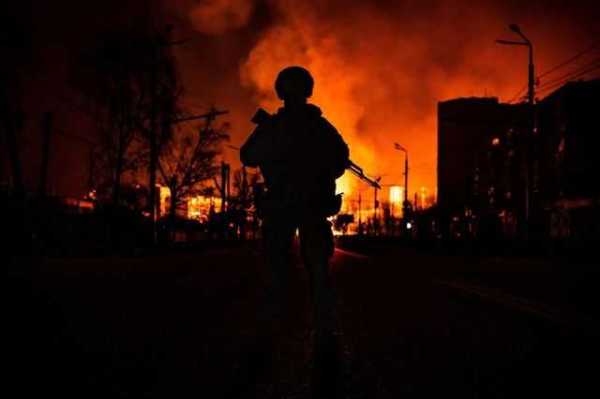
As s T-90 tanks rolled over the border into on February 24, 2022, nobody predicted the level of his troops’ depravity.
The Russians expected their war crimes would melt into history with a stunning victory as they trundled into the capital Kyiv. But ’s troops fought ferociously and drove them back, and over the border, leaving a trail of destruction.
Amid the burned-out armoured vehicles, smoking houses and corpse-strewn streets they left behind horrific evidence. Moscow’s troops attacking from the east were driven back too, all the way to the Donbas region. They now occupy up to 20% of Ukraine.
As Ukrainians prepared for a long war, witnesses told of rapes, executions and theft – mass graves barely hiding Moscow’s murders of huge numbers of civilians. ’s troops have made Russian forces pay dearly for the crimes committed in the weeks after the invasion.
Kyiv insiders estimate there have been 700,000 Russian casualties, with 200,000 dead and the rest suffering terrible injuries, not to mention the psychological trauma of war.
READ MORE:
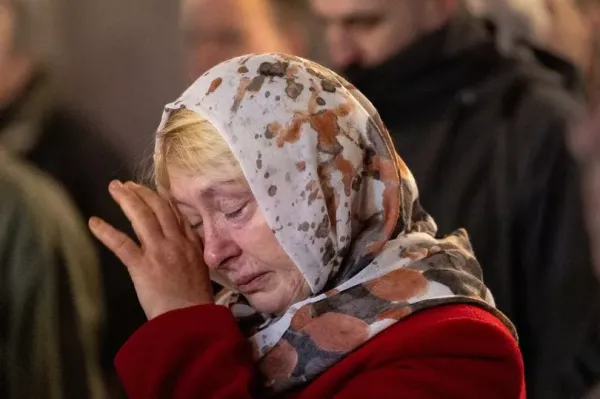 Bucha Massacre
Bucha Massacre
After Russian forces were driven out of towns such as Bucha, north of Kyiv, their massacres were uncovered, with horrific images of dead bodies beamed around the . We found huge pits filled with the corpses of men, women and children hurriedly shoved into mass graves by locals at gunpoint.
One woman told me troops had flown into a rage by the sight of a jar of hazelnut spread in her kitchen. She said: “He was screaming at me ‘you have Nutella?’ And then he called his wife on my phone, telling her ‘the b******* even have Nutella’.”
It is believed 500 bodies were found in the community of Bucha, and in many villages north of Kyiv the same story was told. We also met the son-in-law of disabled grandmother Svetlana Mykolayivna, 77, who was shot dead in her home.
Andrei, 52, said: “She just put her light on as she heard a noise. They shot her dead.”
Jailbird Army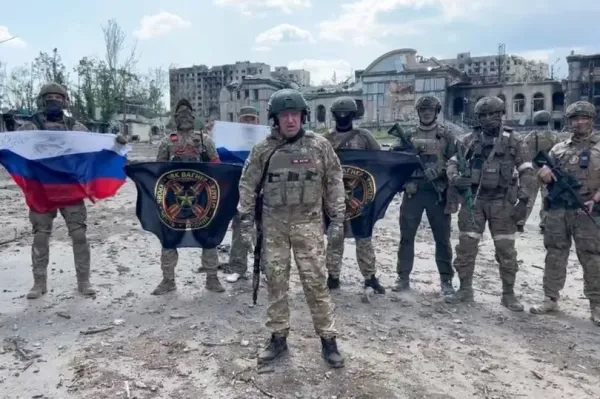
Within months, Putin’s army was reported to be suffering major and serious casualties. His poorly trained and badly equipped troops were either dying or being injured at the rate of 1,000 a day – leading Putin to set about mobilising recruits. The , run by Putin’s friend and ex-gangster Yevgeny Prigozhin, started recruiting prisoners for the front line.
Many died in Ukraine’s “meat-grinder” killing fields but in a secret location we interviewed several who were captured. Married father-of-two Viktor, from Stavropolsky region in Kavkaz, south-east , had been jailed for stabbing a Chechen to death in a club brawl, and joined the Wagner Group after Prigozhin helicoptered into his prison to recruit fighters.
Viktor, 23, told me: “We were told other countries were involved in the war in Ukraine, including Britain, and that we were defending Russia against foreign terrorists.”
As his lags’ army settled in as prisoners of war, Prigozhin died when his private jet was shot down, as Putin appeared to be done with him. Earlier, Prigozhin had led his mercenaries towards Moscow in an uprising that lost impetus and was followed by Putin pardoning him in exile – only to con him into a false sense of security that cost his life.
Mariupol Siege
It began with the invasion and lasted until May 20, 2022, making it one of the worst, most bitterly fought sieges of the war. The Red Cross described the situation in the south eastern industrial town as “apocalyptic” while Ukrainian authorities accused Russia of engineering a major humanitarian crisis.
Kyiv analysts believe as many as 25,000 civilians were killed and at least 95% of the city was destroyed during the fighting, mostly by large-scale bombardments. Major combat operations effectively ended with Ukraine’s Azov Regiment surrendering, with the loss of the city a significant defeat for the country.
Many, however, treat the battle for Mariupol as a symbol of Ukrainian heroism and resistance as they held out so long, diverting Russian troops from elsewhere.
One senior Ukrainian source said: “This was a major embarrassment for Putin and symbolically it showed that even in defeat Ukraine was shining. Many died but it put Russian forces on the back foot and showed them the war was not going to be easy – and that they could lose.”
Kakhovka Dam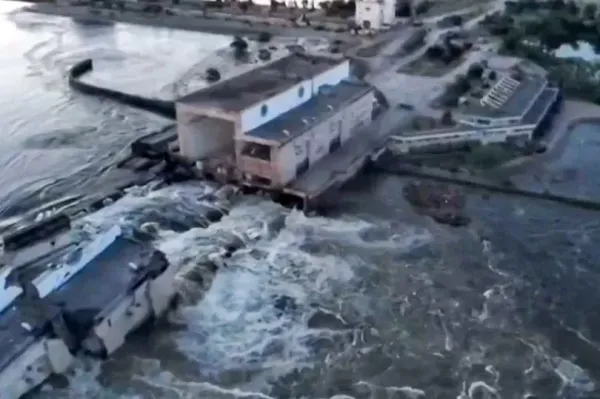
The invasion was a military disaster and a catalogue of humiliation for Putin, who demanded results as his forces were driven back. In June last year they blew up and destroyed the Kakhovka Dam, sparking a natural disaster by flooding the lower Dnieper River in Kherson.
The dam was seemingly breached to cripple an expected counter-offensive. Thousands of residents were evacuated, and floods submerged several villages in both Ukrainian and Russian-controlled areas.
Hundreds died in what is widely suspected to have been one of Russia’s reckless acts of sabotage, although the exact casualties are unknown. Five cubic miles of torrential water flooded 80 settlements with five-metre high floods, ruining drinking water, killing farm animals and destroying farmland.
One security source told the : “Evidence points to Russia trying to hamper the Ukrainian advance – the message being ‘if we can’t have it, then you can’t either’.
This has become a theme of the invasion.
“It was always felt a fallback for Putin was to create a frozen war of apocalyptic ruins, where fighting grinds to a halt and people leave as there is nothing left.
“Hostilities technically would be ongoing but there would be nothing left to fight over. And this is the fear. It is what could happen unless more aid is sent to Ukraine.”
Russian gains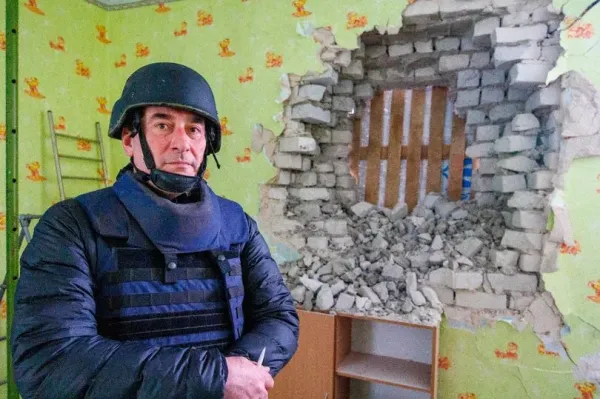
Russia currently occupies 20% of Ukraine, mostly in the south east and east, as well as the Crimea Peninsula, which it annexed in 2014. Putin’s forces have reportedly captured around 310 square miles of territory in 2024. It is believed they have destroyed or captured more than 50% of Ukraine’s power generation capacity.
Russia has also felt the impact of Ukraine targeting its fleet in the Black Sea, as well as Ukrainian forces launching a surprise offensive into Russian territory. In August 2024, Zelensky’s forces crossed the border into the Kursk region and rapidly advanced for 20 miles.
After two weeks, Ukraine’s officials claimed to control more than 500 square miles of Russian territory and 93 villages. As the incursion enters its third month, scores of settlements are still firmly under Ukrainian control and Russia has been forced to deploy 40,000 troops to fight Kyiv’s forces in its own country.
What’s next?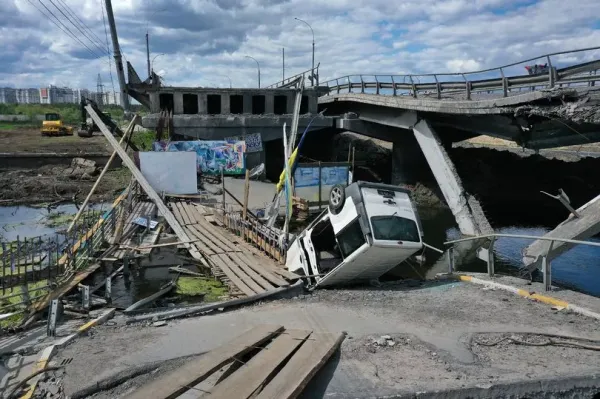
Ukraine is suffering troop losses, although there are no official figures for its battlefield casualties as the President has refused to give them out. Outgoing US President has now finally allowed Kyiv’s troops to use long-range missiles to hit deep inside Russia, despite fears this would antagonise Putin even further.
This frees up Zelensky’s forces to target Russia’s long-range capability, which Putin is trying to use to cripple his foe’s infrastructure. It also boosts Ukraine’s ability to hit artillery installations and long-range bombers.
Defence Secretary John Healey says allies must “come together” to back Ukraine. The UK will provide £7.5million for new drones amid concerns about a change of US stance under . It brings the total drone fund to £67million, £15million from the UK. Britain will not be drawn on whether restrictions on using our Storm Shadow missiles will be eased.
North Korea may send more troops to the front line to fight with Russia as the first few thousand are likely only to last a few weeks. They are unlikely to perform well as they are poorly trained and their weapons are unreliable.